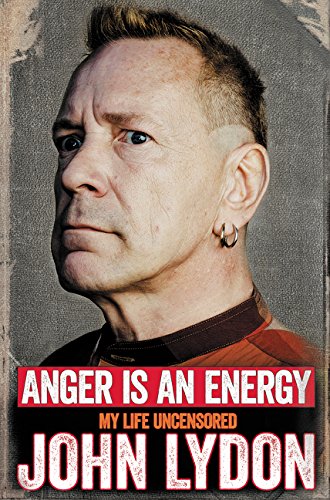Not all movies are classics. But we love them all, even the odd ones. Below are five of the oddest to ever grace the silver screen...
Reefer Madness (1936)
Louis J.
Gasnier directed over 100 movies, but none have had the staying power of Reefer Madness. Since it was reintroduced to audiences at
midnight showings during in the 1960s, this film about the dangers of marijuana
has continuously amazed viewers with its unintended hilarity. With a cast that includes Dorothy Short,
Kenneth Craig, and Lillian Miles, this bizarre little gem defines the
expression “so bad it’s good.”
The movie was allegedly produced
and written by a church group, inspired by a real life case where a Florida man
under the influence of marijuana killed his family with an axe. Though the man was later diagnosed as
schizophrenic, the case helped to outlaw the "demon weed".
The Terror of Tiny Town (1938)
The Terror of Tiny Town is about little bitty people with great big
guns. When the villainous Bat
Haines begins wreaking havoc on Tiny
Town, it’s up to the townspeople to band together and drive him away. The inexhaustible Sam Newfield directed this oddity,
casting it entirely with little people.
Newfield was one of the most prolific filmmakers in Hollywood history,
with over 200 movies to his credit, most of which were made with shoestring
budgets. The genesis of this project came from the mind of Jed Buell, a colorful character who had been
in the business since the silent era, working as a publicity agent for Mack
Sennett. One day Buell overheard an employee
complaining about the cost of
producing movies. “If things
didn’t get better,” he said, “they’d
have to start using smaller actors to save money.” Buell loved the idea, and The Terror of Tiny Town was born. Oh, did we tell you it's a musical?
A few of the little people in the
movie would appear a year later as munchkins in The Wizard of Oz. You might also recognize the star of our
film, Billy Curtis, for his role as Clint Eastwood’s assistant in High Plains Drifter.
Nabonga (1944)
Buster
Crabbe and Julie London headline Sam Newfield’s Nabonga, an exciting jungle drama from the Producers Releasing
Corporation. Crabbe had already
established himself by playing Tarzan, Buck Rogers, and Flash Gordon. Here he
plays ‘Ray Gorman’, a treasure hunter
searching for a downed airplane in the wilds of Africa. He finds the plane, but he also finds the young daughter of a
deceased passenger. Now she’s fully
grown, and she’s protected by a giant gorilla!
Samson the Gorilla was played by actor/stuntman
Ray “Crash” Corrigan. Chances are, if
you see an old movie with a gorilla in it, it’s usually Corrigan in a gorilla
suit. Before he developed his talent for playing gorillas, Corrigan appeared in
several low budget westerns for Republic Pictures, where he played a character
named ‘Tucson Smith’. In one of these
he actually played both Tucson Smith AND a gorilla. Incidentally, Corrigan’s
real name was Raymond Benitz. In one of his early movies,
he played a character named ‘Crash Corrigan’. He liked the name so much that he kept
it.
Bill and Coo (1948)
See what
happens when birds of a feather FIGHT together!
This movie, acted out entirely by birds,
was the brainchild of Dean Riesner, a prolific screenwriter who had been
a child actor in the 1920s known as “Dinky Dean”. At one time Dinky Dean seemed destined for
big things, but by the time of this movie, Riesner was scuffling for work. In his
first and only time in the director’s chair, Riesner gives us the story of Chirpendale, a little town populated by
birds. Into this peaceful setting comes
a menacing black crow. Then, like
something out of an old western, the birds band together to save their
town. You have to see it to believe it. This peculiar feature won an Honorary Oscar in 1948 for its careful
blending of “artistry and patience…”
Director and writer Dean Riesner
went on to have a successful career
writing for movies and television. His biggest claim to fame was writing the
screenplay for several Clint Eastwood
movies, including “Dirty Harry”. That’s
right, the man who gave us Bill and Coo also gave us the phrase, “Do you feel
lucky, punk?”

Spider-women
lure men to their death in this thriller from the golden era of Drive-in
schlock! This story of a mad scientist (Jackie Coogan) working to create a
master race in Mexico is regarded as one of the worst movies ever made. Part
of the problem is that it was originally made by writer/director Herbet Tevos, who
ran out of money before he could finish the project. It was picked up a year
later by director/producer Ron Ormond (King
of the Bullwhip, Girl from Tobacco Row) who added the spider/mad scientist
angle. The final product also included the presence of two Ed Wood favorites,
Dolores Fuller, and Lyle Talbot.
The crazy guitar and piano score by
Hoyt Curtain was purloined by Ed Wood Jr. for his 1954 movie, Jail Bait. In a way, Mesa of Lost Women is a sort of cousin to the films of Ed Wood, though it can stand on its own for being perfectly awful...
* * *
All of these movies are available through thefilmdetective.com, where vintage movies are restored, remastered, and reborn. Follow us on Twitter @FilmDetective
Or follow me at @DonStradley



